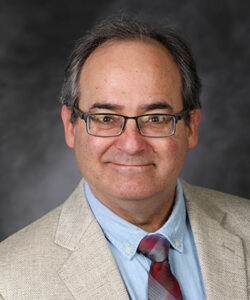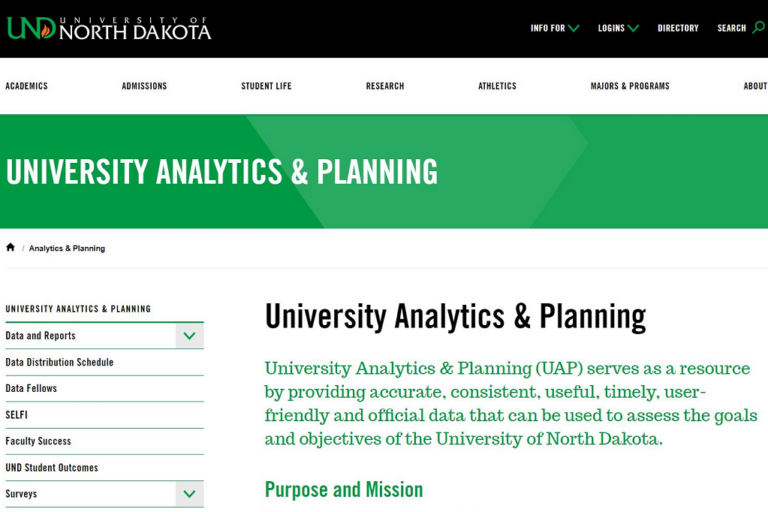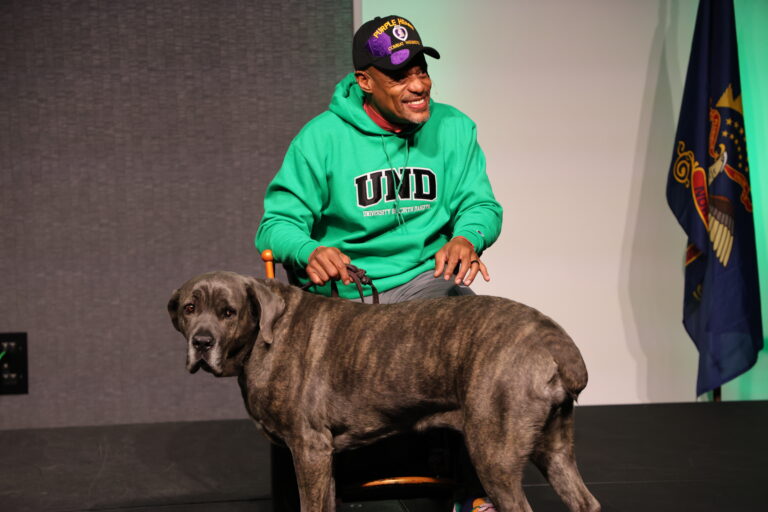Provost Forum: UND becomes more inclusive and diverse
Hard work by faculty, staff and students has paid off, as UND has seen real advancement on Goal 5 of the Strategic Plan

Looking for some meaningful good news?
Then this story’s for you: UND has made real progress toward one of the most challenging and important goals in higher education.
The goal is inclusion — fostering “a welcoming, safe and inclusive campus climate,” as Goal 5 of the UND Strategic Plan puts it. Diversity and inclusion are challenges at universities across the United States. But at UND, “it’s a real pleasure to talk with you today about the work of Goal Five,” said Cara Halgren, dean of students and vice president of student affairs and diversity, at the Provost Forum on Wednesday.
“Some really great things are happening.” It was an Irish poet who suggested that “the greatest gift you can give someone is to see them,” Halgren continued. Goal 5 is helping to create and foster an environment that allows people to be “seen for who they are” and “embraced for all of the different dimensions of their identity,” she said.
Goal 5 Action Items
The steps forward have been taken in key areas such as recruitment, retention, graduation rates, cross-cultural opportunities and improving the campus climate.
Those elements are among the Action Items that the Strategic Plan puts forth to realize Goal Five. UND tracks and pays close attention to them all; and as a result, the trends have been encouraging, said Stacey Borboa-Peterson, UND’s director for student diversity and inclusion, at the Provost Forum.
In the area of enrollment, for example, “the student population group that we’re working with this year went from 1,757 in 2018 to 1,920 in 2019,” Borboa-Peterson said.
“That’s just under 10 percent, which is really, really exciting in terms of our diverse student population.”
Again, the takeaway is not just the upward trend, but the fact that UND’s efforts are helping to move the numbers in the right direction. Among these efforts are the Finish in Four (2+2) partnership with Cankdeska Cikana Community College, a tribal college on the Spirit Lake Reservation in North Dakota. As part of this partnership, social work students complete their first two years at Cankdeska Cikana before earning their bachelor’s degrees at UND.
Similar programs are in the works, “and we’re also beginning conversations about opportunities for engineering students at United Tribes Technical College in Bismarck, and what those programs might look like as they come to UND,” Borboa-Peterson said.
Retention rates among key populations — populations that UND historically has had difficulty retaining — also have improved. The populations are American Indian/Alaskan Native, Black or African American and people with two or more races in their background; and “over the past two years, we’ve focused on and increased efforts on these three populations,” she said.
As a result, “we saw retention rates grow pretty significantly,” with the increase ranging from 5 percent to 11.67 percent.
“These are the highest rates in our five-year Dashboard period, which has been really exciting.”

Scholarship support
Two weeks ago, UND Student Diversity and Inclusion recognized 119 students who made the Dean’s List and 67 students who made the President’s Honor Roll, Borboa-Peterson said.
The University’s Cultural Diversity Scholarship dollars helped a good number of those students succeed. The scholarship program aims to help students who are from underrepresented groups and/or are economically disadvantaged — and it works.
In 2018 and 2019, for example, UND’s Cultural Diversity Scholars enrolled in more credits and completed more credits than did comparable students who hadn’t been awarded the scholarship, Borboa-Peterson noted.
Similarly, the scholarship students earned significantly higher grade-point-averages than the non-scholarship students did — 3.16 vs. 2.82 in the Fall 2018 term, and 3.16 vs. 2.8 in Fall 2019.
By the way, while UND had 184 Cultural Diversity Scholars during the Fall 2018 term, that number had increased to 214 for Fall 2019. So “our numbers are growing,” Borboa-Peterson said, as UND tries to help as many students as possible with this significant scholarship aid.

Survey results
Goal 5 of the Strategic Plan calls on UND to assess the climate on campus on a regular basis. With that in mind, UND completed its first Campus Climate Survey in the spring of 2018, then posted and acted on the results.
The second Campus Climate Survey was completed this spring, and the findings will be available this summer, said Sara Kaiser, associate director of the Office of Student Rights and Responsibilities, at the Provost Forum.
But one key figure from this year already is drawing attention: 35.4 percent. That’s the percentage of students who completed the survey, drawn from the very large number — 12,180 students — who were invited to do so. And it’s up dramatically from the 26 percent completion rate of the 2018 survey.
“We’re ecstatic that that many students filled it out,” Kaiser said.
“The survey takes about 20 minutes for a student to complete and asks quite a few questions. So we’re thrilled that students shared with us their experiences, their perceptions and what they think is going on on campus.”
In the 2018 survey, some 97 percent of students said they felt safe at UND, and 83 percent said school leaders are visibly committed to fostering respect for diversity. Those were very strong numbers, but UND still convened focus groups and launched faculty and staff development programs and other efforts to make them even stronger. The results will be tracked with care when the 2020 survey numbers are released.
Campus Pride Index
Two other achievements of note: First, UND scored four out of five stars on the Campus Pride Index, a national benchmarking tool that indicates commitment to LGBTQ-inclusive policies. Thanks to this score, the Campus Pride Index now lists UND as the premier LGBTQ institution in North Dakota. That means “we have met the criteria to be a leading institution in the state with an ongoing commitment to LGBTQ inclusion,” Borboa-Peterson said.
Second, UND has made significant progress in “increasing opportunities for cross-cultural understanding,” another Goal 5 action item from the Strategic Plan. The key has been “intentional” programming, as Borboa-Peterson explained.
“Prior to this, much of the cultural programming was done by the student organizations themselves,” she said. Today, in contrast, UND takes the lead while working closely with the student organizations. The students very much appreciate UND taking on these efforts, as it relieves the student groups of a heavy and time-consuming responsibility, she said.
Also, programming efforts have expanded beyond events and include short courses and workshops that are available to faculty, staff, and students.



